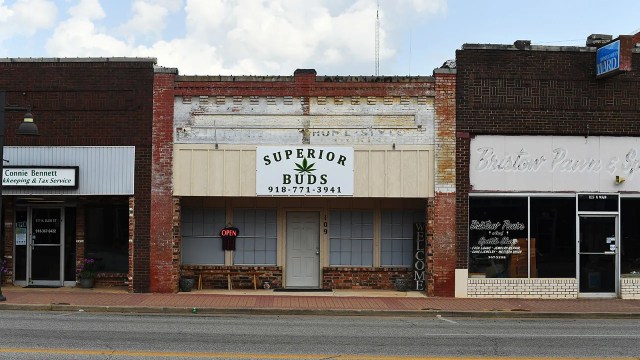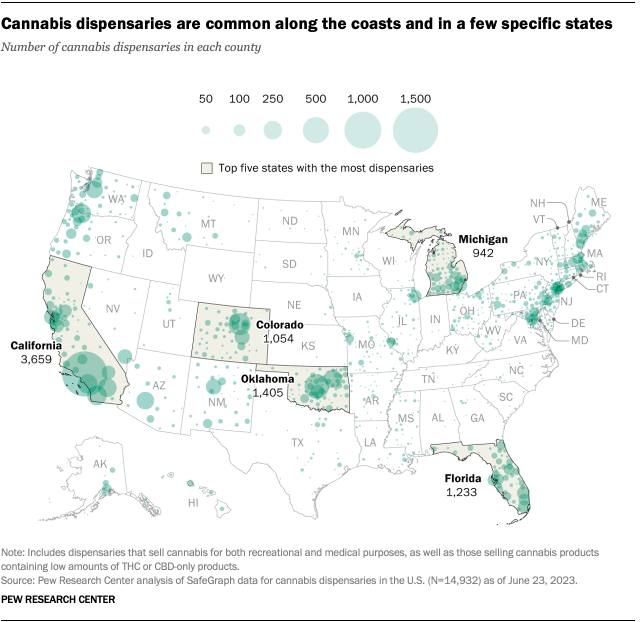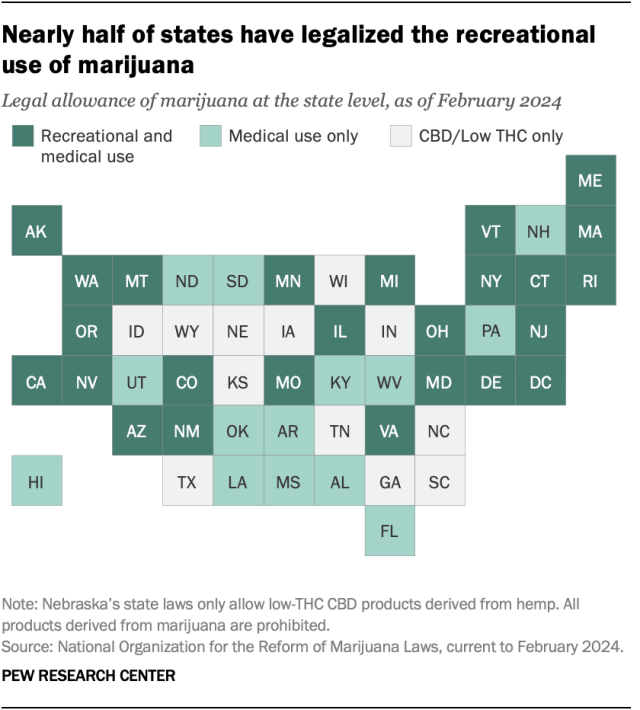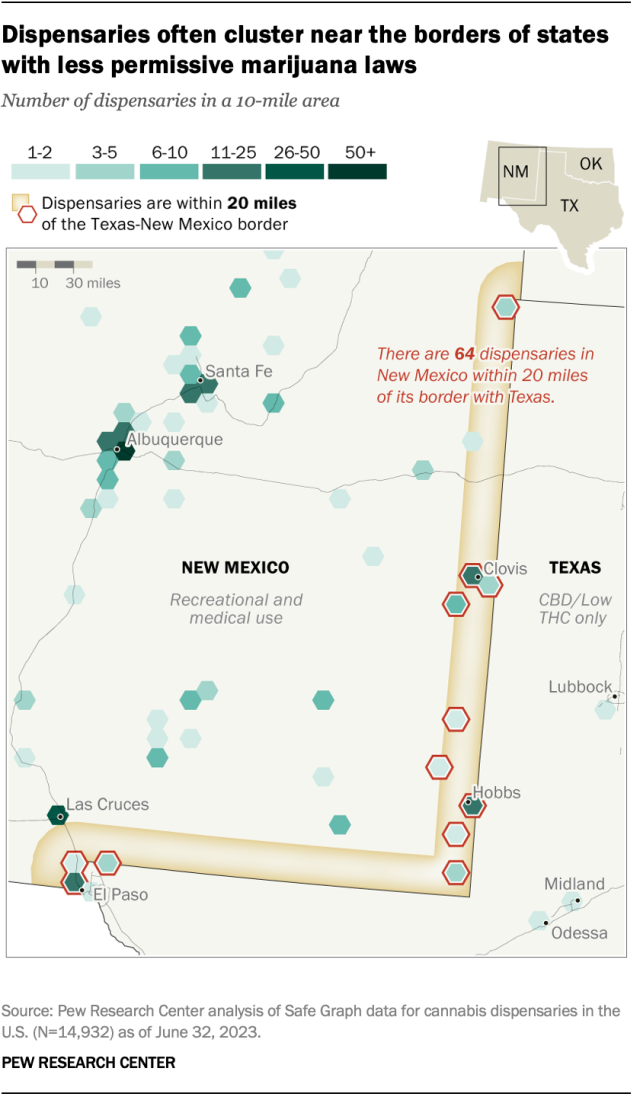Most Americans now live in a legal marijuana state – and most have at least one dispensary in their county

Marijuana is illegal under federal law, but most Americans now live in a state that has legalized the drug. And most also have at least one cannabis dispensary in their county, according to a new Pew Research Center analysis.
The analysis finds:
- 54% of Americans live in a state where the recreational use of marijuana is legal – just a dozen years after Colorado and Washington became the first states to allow the drug for recreational purposes.
- 74% of Americans live in a state where marijuana is legal for either recreational or medical use. California was the first state to legalize medical marijuana in 1996.
- 79% of Americans live in a county with at least one cannabis dispensary.
- There are nearly 15,000 cannabis dispensaries in the United States. Dispensaries (businesses that sell cannabis products) are common on the West Coast and Northeast, but also in interior states like Michigan, Oklahoma and Colorado.
- California has far more dispensaries than any state: 3,659 at the time of this analysis, more than double the amount in the second-highest ranking state. A quarter of all marijuana dispensaries in the U.S. are in California, and nearly all Californians (99.5%) have a dispensary in their county. Los Angeles County alone has more dispensaries (1,481) than any state other than California itself.
- Oklahoma has the most marijuana dispensaries per capita of any state: 36 dispensaries for every 100,000 residents.
These findings are based on our analysis of state marijuana laws from the National Organization for the Reform of Marijuana Laws; U.S. population statistics from the U.S. Census Bureau; and marijuana dispensary locations from SafeGraph, which curates information about millions of places of interest around the globe. Our analysis of dispensaries includes those that sell cannabis (including low-THC cannabis products) for medical or recreational use.
Below, we’ll explore these findings in more detail.

Which states have legalized marijuana for recreational or medical use?
Since Colorado and Washington became the first states to pass legislation in 2012, there are now 24 states (plus the District of Columbia) that have legalized the recreational use of marijuana as of February 2024. Another 14 states allow the drug for medical use only.
The remaining 12 states have legalized limited access to cannabis products that contain little to no THC – the main psychoactive substance in marijuana – such as CBD oil.
And 27 states across all levels of legalization have decriminalized recreational marijuana use.

These changes in state law come as a broad majority of Americans say marijuana should be legal in some way. In an October 2022 Pew Research Center survey, 88% of U.S. adults said the drug should be legal, either for recreational and medical use (59%) or for medical use only (30%).
Our analysis finds that around three-quarters of all dispensaries in the country (76%) are in states that have legalized the recreational use of marijuana. Another 23% are in medical marijuana-only states. In fact, two of the top five states with the largest number of dispensaries – Oklahoma and Florida – allow the drug for medical use only.
The remaining 1% of dispensaries are in states that have made legal allowances for low-percentage THC or CBD-only products. Half of all residents of these states live in a county with at least one dispensary.
Where are cannabis dispensaries located within states?

The patchwork of state laws governing the sale and use of marijuana means that many states have more permissive laws than their immediate neighbors do. Our analysis finds concentrations of dispensaries near these borders between more and less permissive states.
Overall, one in every five dispensaries in the U.S. is located within 20 miles of a state border. And 29% of these border dispensaries adjoin a neighboring state with less permissive cannabis laws.
For example, Indiana, Kansas and Texas all have restrictive marijuana laws but are bordered by multiple states that have legalized the drug for recreational or medical purposes. In fact, a person residing in one of these three states can find more than 100 dispensaries within 20 miles of the state’s borders.
The early years of marijuana legalization were marked by concerns that dispensaries would be clustered in low-income neighborhoods. Our analysis finds that, nationwide, median incomes tend to be a bit lower in areas with a greater concentration of dispensaries.
But this can vary quite a bit in individual states.
In four states that have legalized marijuana for both recreational and medical purposes – Colorado, Connecticut, Maryland and Virginia – median annual household incomes are at least $20,000 lower in areas with high concentrations of dispensaries than areas in the state with low concentrations of dispensaries. In New Hampshire and New York, by contrast, median household incomes are around $20,000 or more higher in areas with many dispensaries than in areas with few dispensaries.


No comments:
Post a Comment